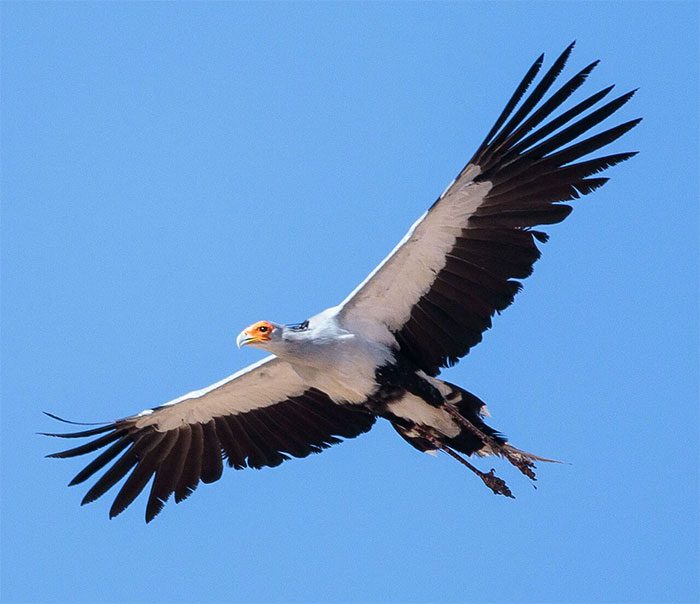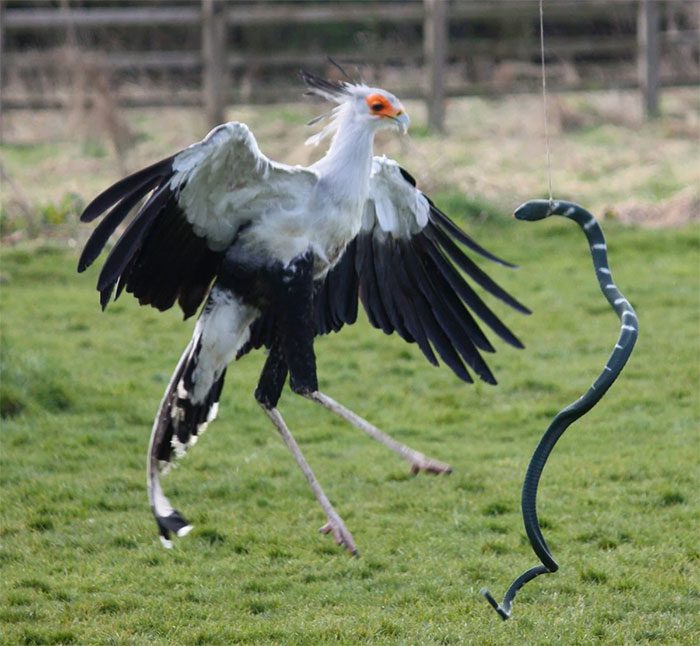In the complex landscape of bird nomenclature, few names evoke as much curiosity as the Secretarybird, a mysterious species whose name conceals a fascinating blend of history, mythology, and ornithological observation.
Have you ever wondered why the Secretarybird is called that? This unique raptor is endemic to Africa, featuring a striking appearance that combines an eagle-like body with long crane-like legs and a black feathered crest on its head. But what does this have to do with a secretary?
Standing at about 1.3 meters tall and nearly as long as it is high, the Secretarybird (Sagittarius serpentarius), also known as the serpent eagle, is a distinctive raptor that inhabits sub-Saharan Africa. It is the only member of the family Sagittariidae and primarily lives on land, hunting on the ground with its long legs and strong feet.
It can stomp on its prey with its long legs, especially snakes. Its remarkable appearance features an orange-red face, gray plumage, a black crest, and two long tail feathers.

This bird is endemic to Africa, commonly found in grasslands and sparse savannas in the sub-Saharan region. It can be easily recognized by its large body resembling that of an eagle or hawk. An average Secretarybird stands about 1.3 meters tall, weighs around 3.3 kg, and measures approximately 112 cm to 150 cm in length, with a wingspan of 191 cm to 225 cm. Due to these traits, it is larger than any other daytime raptor.
There are several theories as to why this bird is called the Secretarybird, but none of them are particularly convincing. In 1769, Dutch naturalist Arnout Vosmaer described the Secretarybird based on a live specimen received in the Netherlands from the Cape of Good Hope, sent two years prior by an official of the Dutch East India Company.
Vosmaer asserted that Dutch settlers referred to this species as “sagittarius” because its gait was thought to resemble that of an archer. Additionally, he noted that farmers had domesticated this bird to control pests around their homes, calling it “secretarius.” Vosmaer suggested that “secretary” could be a misspelling of “sagittarius.”

Despite its somewhat “feminine” appearance, it is a notorious killer in the wild. It hunts by walking and searching for prey in the grasslands, but can sprint to catch its meal when necessary. The Secretarybird’s diet mainly consists of small mammals, reptiles, birds, and insects. True to its name, the serpent eagle cannot resist snakes, even venomous ones are no match for it.
In 1780, Comte de Buffon suggested that the name referred to the black feathers at the back of its head, reminiscent of the quill pens that ancient scribes would place behind their ears. Simultaneously, the gray and black plumage of this bird evokes the tailcoat worn by secretaries.
In 2018, Ian Glenn from the University of the Free State proposed an alternative view, suggesting that “sagittarius” mentioned by Vosmaer is more likely to have been misheard or mis-transcribed as “secretary,” rather than the other way around. Others support this idea, arguing that farmers domesticated these birds to train them to protect their crops – acting as assistants in agriculture.

The Secretarybird can pair at any time of the year, depending on the food availability. Their courtship display is quite simple, with the male and female spreading their wings and chasing each other across the grasslands.
Another theory suggests that the name originates from the Arabic term “saqr-et-tair,” meaning “desert hawk” or “flying hawk.” This term was mispronounced by the French as “secretary” and subsequently adopted by other languages.
However, Glenn dismissed this etymology by arguing that there is no evidence that the name was transmitted through French; instead, he supports Buffon’s proposed origin, asserting that the term derives from the Dutch word “secretaris,” which was used by settlers in South Africa.

The Secretarybird is one of the strongest kickers in the animal kingdom, delivering a “gentle” kick with a force of approximately 195 Newtons, which is 5-6 times its body weight. It strikes so quickly that the entire action takes place within the blink of an eye.
Therefore, the Secretarybird could indeed be called so because it looks or acts like a secretary. But this is not the only intriguing fact about this remarkable bird.
In fact, the Secretarybird, or serpent eagle, belongs to the family Sagittariidae, and it can kick with a force five times its body weight and has scales on its legs to protect against snake bites. It can mate at any time of the year and builds large nests in acacia trees, where it lays two or three eggs each summer. It has a wingspan of two meters and can fly, but generally prefers walking; it can move up to 30 kilometers a day.
Ultimately, there is a rather sobering fact about this remarkable bird: it is classified as endangered by the IUCN due to habitat loss and human persecution. This is truly unfortunate because, regardless of the true origin of its name, the Secretarybird remains a fascinating creature deserving of our attention and conservation efforts.


















































